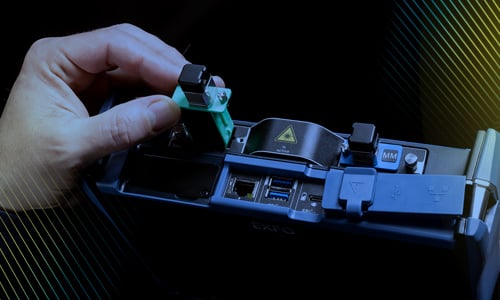Dispersion is Back with a Vengeance
Although the OIF has been pushing for a seamless 100 Gbit/s market transmission, namely dual polarization state phase modulation (DP-QPSK), we are seeing more and more non-DP-QPSK 100 Gbit/s in the metro environment. This comes at a much lower cost, yet does not have the physical impairment resistance of DP-QPSK. In fact, this is direct detection. However, this means that once again, dispersion testing as well as a clean dispersion map and strategy are required for the Metro environment.
The Metro environment is characterized by mesh, ROADM-based networks and heavy traffic. Obtaining such a dispersion map can be a daunting task, requiring several truck rolls. In today’s OPEX-sensitive environment, many opt to take the risks involved with not testing this scenario in order to avoid this source of high OPEX costs. That is, until they learn about the capability enabling both CD and PMD to be tested from one end of the node. So, instead of having to wait for a remote technician to travel from location to location with a test source, a single technician based in a single location can test several spans and directions, typically reducing the OPEX associated with optimizing the dispersion map by threefold or more.
This is also true for smaller metro areas where, for example, CWDM is common. CWDM used to be low speed, but now is being deployed at 10 Gbit/s, at which speed CD and PMD testing becomes a requirement.
So, if you are deploying noncoherent 40G or CWDM 10G in your mesh network, remember that CD and PMD are critical parameters that can be tested with greatly optimized OPEX using a single-ended test instrument such as EXFO’s FTB-5700 Single-Ended Dispersion Analyzer. If you'd like to learn more about this topic, I invite you to read the CD and PMD Testing: Meeting Today’s Challenge at Limited Costs application note.




